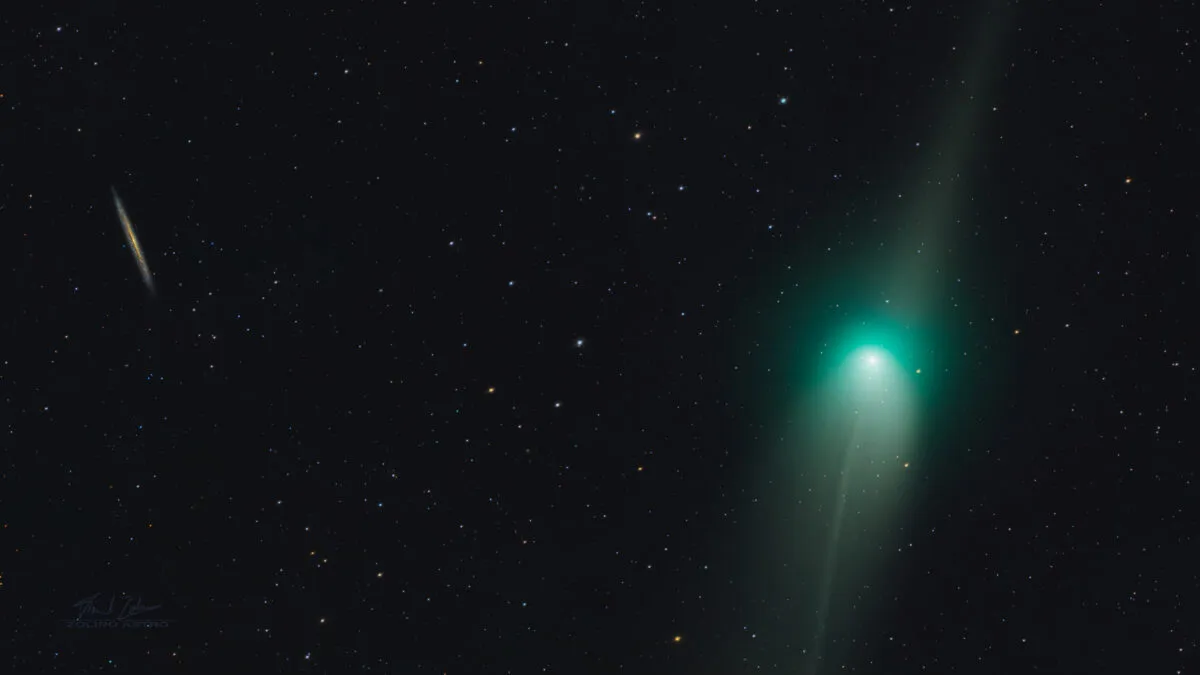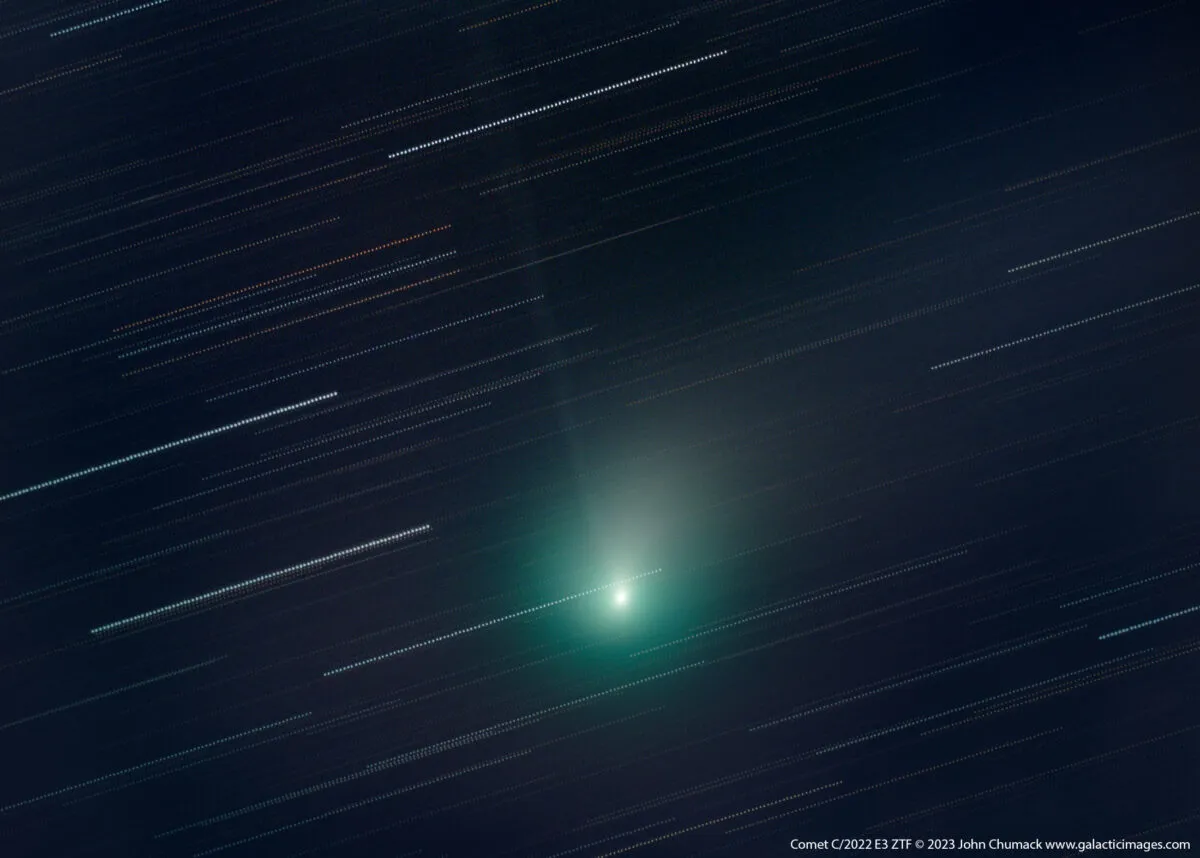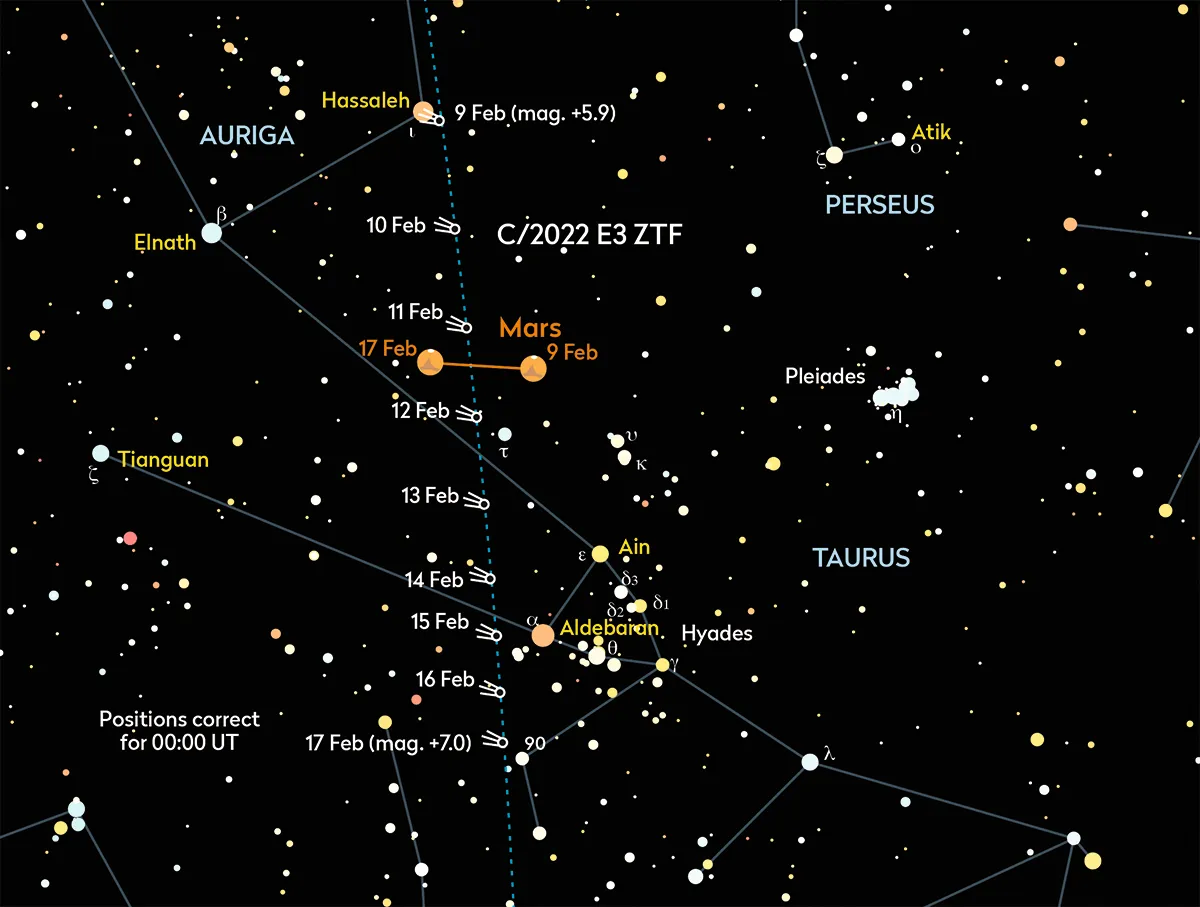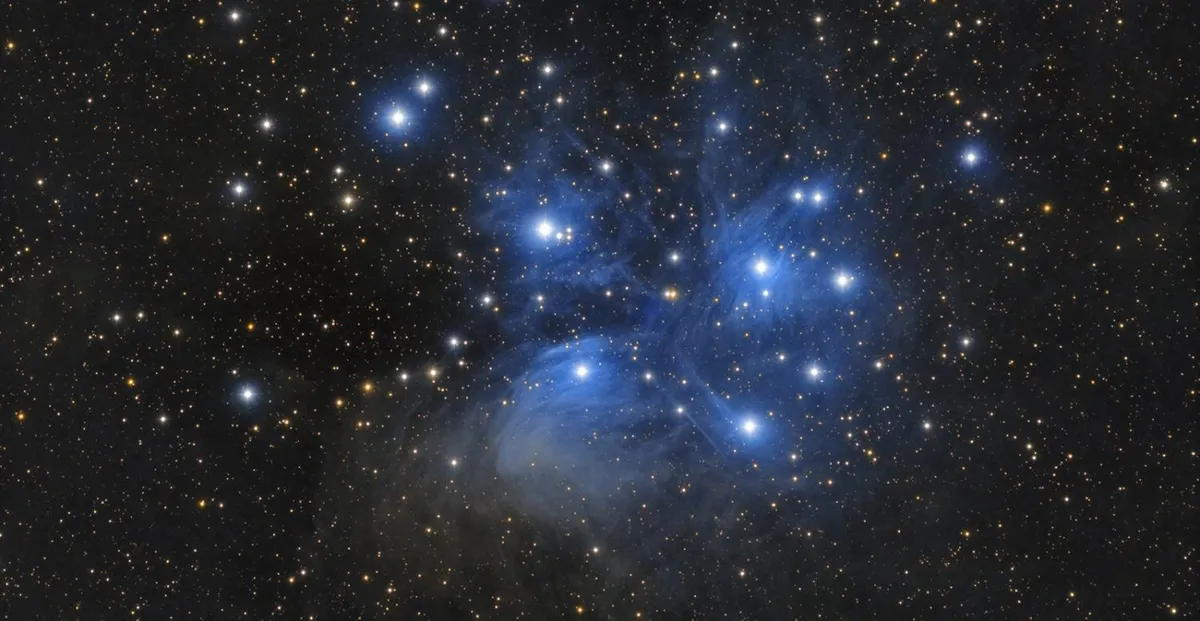It's safe to say that the story of Comet C/2022 E3 ZTF has proven to be better than many of us had cautiously hoped for.
Comets have a funny way of promising everything, then withering out and delivering very little.
Not every comet ends up being a Comet NEOWISE or Comet Leonard!

And while most of us knew Comet E3 was never going to live up to the hype of being 'spectacular' or 'blazing across the sky' as some were reporting, there was still the question as to whether or not it would be bright enough to comfortably observe through binoculars and small telescopes.
As astronomer and astrophotographer Stuart Atkinson reported on this very website throughout January and February in his Comet C/2022 E3 ZTF blog, it really did end up being a memorable comet, and certainly a great start to the year (keep up with Stuart's comet encounters via his @mars_stu Twitter page).

So what now for Comet E3? For those of us in the northern hemisphere, it's safe to say its best days are behind it.
A recent highlight was on the night of 5/6 February, when the comet passed by bright star Capella in Auriga, making for a wonderful conjunction that was observed and photographed by keen comet chasers.
Have a look at this wonderful gif posted by @adrianjannetta on Twitter:
Then on the morning of 7 February, Comet E3 passed west of the Kids asterism formed by Eta (η) and Zeta (ζ) Aurigae.
And now, in what might be considered its last hurrah before it really starts to fade away, Comet E3 will pass by Mars on the nights of 10/11/12 February.
On 10/11 February the comet will be found to the northeast of the Red Planet, and on 11/12 February it will be found to the southeast.
Then on 15/16 February the comet can be seen to the east of Aldebaran, the bright red star in Taurus.

The view of Comet C/2022 E3 ZTF passing by Mars should really be something, although it's worth pointing out that it won't be visible to the naked eye.
And, of course, the comet isn't really passing by Mars: it just appears that way from our position on Earth.
If you've got clear skies this weekend and a pair of binoculars, point just to the right of Mars, above the Hyades open star cluster, and you should be able to spot it.
You can use the recognisable Pleiades star cluster to help you find Mars on the night in question (see chart above).

Then, keep following the comet into next week for the aforementioned encounter with Aldebaran.
It will pass close by Aldebaran in the evening of 14 February, Valentine’s Day.
After this, Comet E3 will really begin to fade, but it's been wonderful having it grace our skies, for those of us who've been out spotting it through binoculars or a telescope.
Many online reports focussed on the fact that Comet C/2022 E3 ZTF was last seen by humans 50,000 years ago, which really does bring home both the cyclical nature of the Solar System and humanity's fleeting existence in the context of the cosmos.
Often, the best astronomical events are the ones that give observers both celestial beauty to admire, along with a poignant reminder of what it means to be a citizen of planet Earth
Comet E3 has certainly been that.
